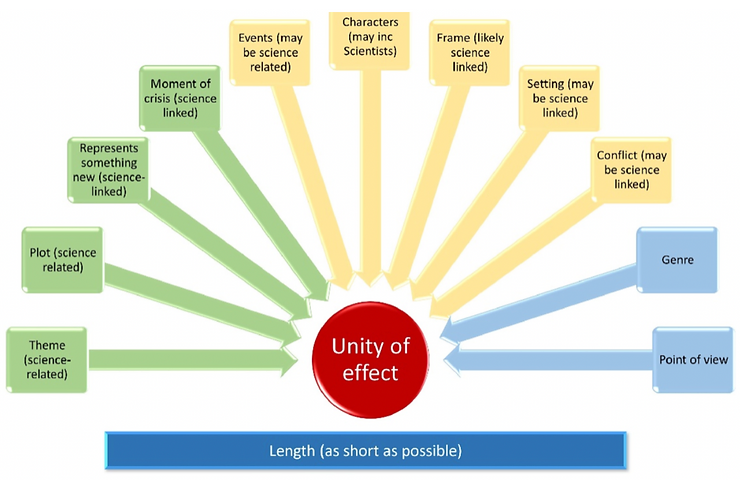Ink and Insight: Unveiling the Alchemy of Short Stories in Science Communication
By Mahima Samraik
Title: Factors affecting the efficacy of short stories as science communication tools
Author(s) and Year: Masoud Irani, Emma Weitkamp; 2023
Journal: JCOM : Journal of Science Communication (open access)
TL;DR: Well-written short stories with a scientific theme show great promise for science communication. But, it can be difficult to create compelling stories since they call for an understanding of narrative elements and storytelling approaches. This essay places a strong emphasis on quality and provides guidelines for writing compelling scientific narratives.
Why I chose this paper: During my formative years, science fiction books captivated me and motivated me to pursue a career in STEM. Recognising their influential power, stories serve as a potent medium for science communicators to ignite public interest and raise awareness. Information can be effectively delivered, fostering engagement and curiosity, by combining the art of storytelling with scientific accuracy.
We enthusiastically consumed the enthralling science fiction stories on the big screen as children, kindling aspirations for many of us to become brave scientists. Scientific information can now go beyond the limitations of conventional communication by utilizing the force of literary fiction and embracing a distinctly creative and imaginative approach.
The Method
The main question addressed by Irani and Weitkamp is to enhance the impact of short stories in science communication. They explore the factors that contribute to the efficacy of short stories as science communication tools, with a focus on the quality of short stories.
The authors argue that facts are insufficient when it comes to engage people and literary fiction offers a novel way to communicate science. The essay examines the variables that affect the potency of short stories as science communication tools. According to research, adopting story techniques (narratives) to science communication may have numerous advantages. They can be classified into three categories: engagement (or curiosity), persuasion (or behaviour change), and learning (or memory retention).
However, the significance of narrative quality in science communication is largely unexplored. Numerous components, including narrator, structure of the story along with scientific accuracy, are suggested as indicators of quality; however, judgment may differ depending on goals and reader perceptions. The plot, the way the central information is presented, the creation of compelling characters, and the reader’s motivations all play a big part in how effective a narrative is. When writing a short science fiction story, there are no set rules. Therefore, utilizing diverse formats in crafting the story can create a captivating and fascinating narrative.
The Findings – Crafting a Compelling Short Science Story
Due to their capacity to captivate readers with engaging narratives, short stories offer opportunity for science communicators and researchers to investigate various communication forms.The authors believe that researchers can improve their communication techniques and gain a better understanding of the benefits and drawbacks of storytelling in science communication by contrasting short stories with the particular structure, style, or method used in developing the narrative.

Figure 1 – Researchers summed up the characteristics that can result in a well-written short story for research in scientific communication.The characteristics are compiled by the authors which all bring together (unity of effect) keeping the main narrative to be short and plausible.
The claims for compelling short stories as described in the essay are as follows –
- Length and Information Density: Compared to journalistic formats, short stories are typically less information dense, requiring more words to say the same thing. When comparing different genre formats, researchers must take into account the difficulty of maintaining constant text lengths without sacrificing crucial story components.
- Placing Science in Familiar Contexts:Short stories have the ability to relate scientific information to everyday life by placing it in relatable situations. This is especially useful for examining how science affects daily life and promoting environmental or health-related behavioral changes.
- Science Fiction and the “What If...” Scenario: By posing “what if…” scenarios, science fiction is a successful genre for science communication, offers imaginative viewpoints. These hypothetical situations can ask readers to conjure up hypothetical settings or circumstances using scientific principles. Through captivating plotlines that keep one hooked to the books and promoting scenarios that explore the “what if” in science communication, stories that examine scientific explanations or future predictions can hold readers’ attention.
- Central Placement of Scientific Information: The scientific message should be the main focus of a well-written science story. The message should permeate the story, adding to its explanation, plausibility, and overall effect, even though it shouldn’t be stated explicitly. The inclusion of science in the narrative should increase engagement rather than decrease it.
- Inseparability and “Unity” Effect: A story’s components, including the crucial role of scientific information, must come together harmoniously and effectively in order to be judged for quality. A well-written short story shouldn’t contain any extraneous information that doesn’t contribute to the story’s overall theme or effect. When all features are considered necessary, it becomes difficult to exclude any words without reducing the impact of the narrative.
The Untapped Potential of Short Stories
The secret to science-themed narratives in both study and communication is to write outstanding short stories. We all understand the agony of reading stories that are poorly written, so quality stands as the cornerstone. But creating an appealing narrative still presents a difficult problem. It demands expertise, passion, and a deep understanding of narrative facets to deliver messages, emotions, and unique perspectives on complex issues.
Despite the hurdles, well-crafted stories offer flexibility, enabling researchers to explore various themes, test ideas, and convey captivating messages. Nevertheless, finding the time and skill to create such narratives can be daunting. Collaboration between scientists and skilled writers emerges as a promising approach, ensuring scientific accuracy and captivating storytelling. As scicomm practitioners venture into this realm, we should not overlook the importance of training for those embarking on storytelling projects, fostering a synergy of scientific content and creative expression. Well-crafted short tales have the power to revolutionise science communication by capturing audiences, producing coherent and significant outcomes, and being both brief and fascinating. In our quest for scientific engagement, let’s embrace the transformative power of short stories and unleash it.
Edited by: Andrea Lopez and Niveen Abi Ghannam
Cover image credit: Utah Public Radio

